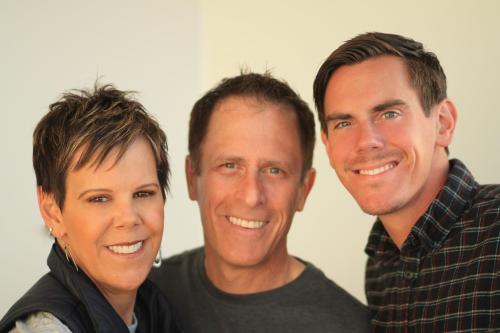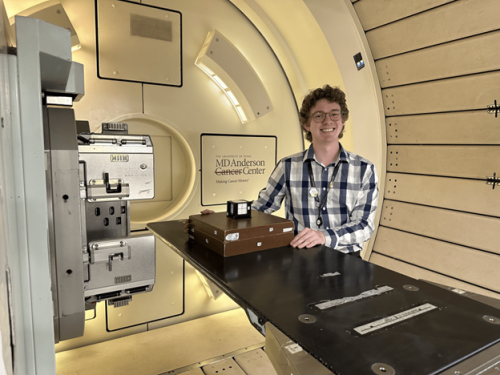
-
Understanding primary immunodeficiency (PI)

Understanding PI
The more you understand about primary immunodeficiency (PI), the better you can live with the disease or support others in your life with PI. Learn more about PI, including the various diagnoses and treatment options.
-
Living with PI
-
Addressing mental health
-
Explaining your diagnosis
- General care
- Get support
- For parents and guardians
-
Managing workplace issues
- Navigating insurance
-
Traveling safely

Living with PI
Living with primary immunodeficiency (PI) can be challenging, but you’re not alone—many people with PI lead full and active lives. With the right support and resources, you can, too.
-
Addressing mental health
-
Get involved

Get involved
Be a hero for those with PI. Change lives by promoting primary immunodeficiency (PI) awareness and taking action in your community through advocacy, donating, volunteering, or fundraising.
-
Advancing research and clinical care
-
Research Grant Program
-
Consulting immunologist
-
Diagnosing PI
-
Getting prior authorization
-
Clinician education
-
Survey research
-
Participating in clinical trials

Advancing research and clinical care
Whether you’re a clinician, researcher, or an individual with primary immunodeficiency (PI), IDF has resources to help you advance the field. Get details on surveys, grants, and clinical trials.
-
Research Grant Program
A group of nurses and case managers at Children’s Hospital of Orange County (CHOC) now have a deeper understanding of what it means to care for a baby with severe combined immunodeficiency, known as SCID, thanks to SCID Compass.
SCID Compass is an educational program of the Immune Deficiency Foundation (IDF) designed to raise awareness of SCID and assist parents, as well as providers, learn about how to improve care for babies with SCID. SCID is a primary immunodeficiency in which a baby is born without a functioning immune system. The condition is usually fatal if not treated within the first few months of life.
As part of the educational outreach component of SCID Compass, a program representative and a program partner traveled to CHOC in January to deliver a presentation on SCID. Presenters included SCID Compass Program Manager Alissa Huston and SCID, Angels for Life President Heather Smith, a parent of two children born with SCID.
“(The CHOC staff) appreciated hearing the parents’ perspective of the disease of SCID. Also, they learned there isn’t a specific standard of care for these patients,” said Debbie Zumbrunn, CHOC nurse and case manager, who invited SCID Compass to discuss SCID as one of several topics covered during a staff development day on hematology education at CHOC.
“The nurses and case managers have been wanting a specific ‘plan of care’ for our SCID patients and after this presentation they realized every patient is different and treatment is very different.”
During the 90-minute presentation, Huston discussed IDF and SCID Compass; SCID diagnosis, types and treatments; and the recently launched SCID Compass website, www.scidcompass.org. CHOC participants showed particular interest in how the website is modeled on a journey map, a step-by-step outline of how a child is treated for SCID and parents’ emotional states and informational needs throughout each of those steps.
“They liked the psychosocial aspect of the website,” said Huston.
Smith shared her experiences with her sons affected by SCID and how they inspired her to establish a non-profit to help other parents as they care for their own children diagnosed with SCID.
Heather gave birth to son Brandon in 1993, a time when no states performed newborn screening for SCID. Brandon lived for 6 months with his SCID undetected before falling ill in November 1993. Three weeks later, after developing graft versus host disease and suffering a stroke, Brandon died. Doctors had diagnosed Brandon with SCID during that brief period of illness, but his health deteriorated so quickly, it was impossible to save his life.
After Brandon’s death, Heather Smith learned she is a carrier of X-linked SCID, so she chose to have a hematopoietic stem cell transplant in-utero during her second pregnancy with son Taylor, diagnosed with SCID while still in the womb. Taylor’s treatment succeeded and has kept him healthy until recently when a drop in T cells required him to undergo gene therapy. Today, at age 24, Taylor is doing well after the treatment he received in summer 2019.
Smith told the group that she and her husband John Smith started SCID, Angels for Life, a nonprofit designed to increase awareness about SCID and support and educate parents about the disorder, in 2008 as a memorial to Brandon’s life and a tribute to Taylor’s life.
“They were all very compassionate listeners being nurses. They really felt the story and I had some people wiping tears from their eyes. They got it, and following the sharing of my story they had some excellent questions,” said Smith of the CHOC group. “They really showed a vested interest and the question and answer went on for some time.”
Smith said she appreciated the graciousness of the audience and felt they increased their knowledge of SCID by listening to the presentation.
“Any time you have an opportunity to educate the medical community on what it’s like to be a patient or be a family member of a patient, it’s well worth the effort, especially when they are so willing to learn and listen,” said Smith.
“If there was one takeaway that we both stressed to this group of nurses is that a lot of these SCID patients are treated on the oncology floor and they are not cancer patients and their care is going to be much different than cancer patients. They got it. They said, ‘Thank you for sharing it with us.’”
Huston said the CHOC presentation serves as the next logical step in the ongoing SCID Compass project. She aims to visit other medical facilities and family groups to share the message of SCID Compass.
“I think this meeting was very valuable,” said Huston. “We’ve been working for the past 18 months to do extensive formative research to identify what families and providers need and making sure that providers understand what parents experience when their infant is diagnosed with SCID .”
“We’ve used the data to build a website and now create resources which will hopefully fill in those gaps, whether families or providers are located in a big city or a rural area. Now, we’re able to share it with people so that they know about it.”
Smith echoed Huston’s perspective that visiting CHOC is only the beginning of the SCID Compass provider outreach. Smith said she views the SCID presentation at CHOC as a pilot program, which can be replicated at other hospitals, particularly those in more rural areas where access to medical care is limited.
“I had not really done an event particularly like this that was aimed at hematology and oncology nurses, but I walked away feeling like this could be a blueprint for what we want to do at other facilities,” said Smith.
Smith said when she talked about the visit to CHOC with other parents involved in SCID Angels, they also suggested that SCID Compass reach out to more rural hospitals that might be in greater need.
“Now, with all the states screening for SCID, the reality is that not everyone is going to be treated at a Primary Immune Deficiency Treatment Consortium center,” said Smith. “Our job is to equip these other hospitals with the knowledge they need to care for these patients because there is currently no standard of care.”
Related resources
Sign up for updates from IDF
Receive news and helpful resources to your cell phone or inbox. You can change or cancel your subscription at any time.





The Immune Deficiency Foundation improves the diagnosis, treatment, and quality of life for every person affected by primary immunodeficiency.
We foster a community that is connected, engaged, and empowered through advocacy, education, and research.
Combined Charity Campaign | CFC# 66309




